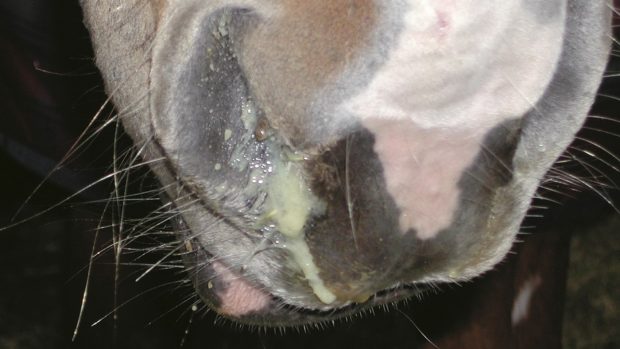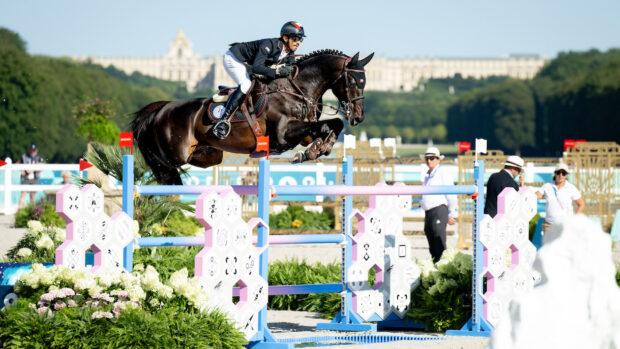You might dream of a safari on horseback, or perhaps you have already been lucky enough to experience one. But what about the remarkable horses you ride once at your destination? How do the experts go about sourcing and training a horse for safari so they are able to cope with what’s required in their everyday lives?
Isabel Juby of African Horse Safaris, who provides horseback safaris in Africa, recently had a chat with Barney Bestelink from Okavango Horse Safaris to discuss the most effective ways to train horses to cope with the terrain and being surrounded by Africa’s Big Five.
How to train a young horse for safari holidays
Where do you source most of your safari horses?
Most of our operators either breed their own safari horses or collaborate closely with breeders in South Africa and Kenya. They maintain strong connections with farriers and equestrians who often suggest horses with backgrounds in racing, eventing, or polo.
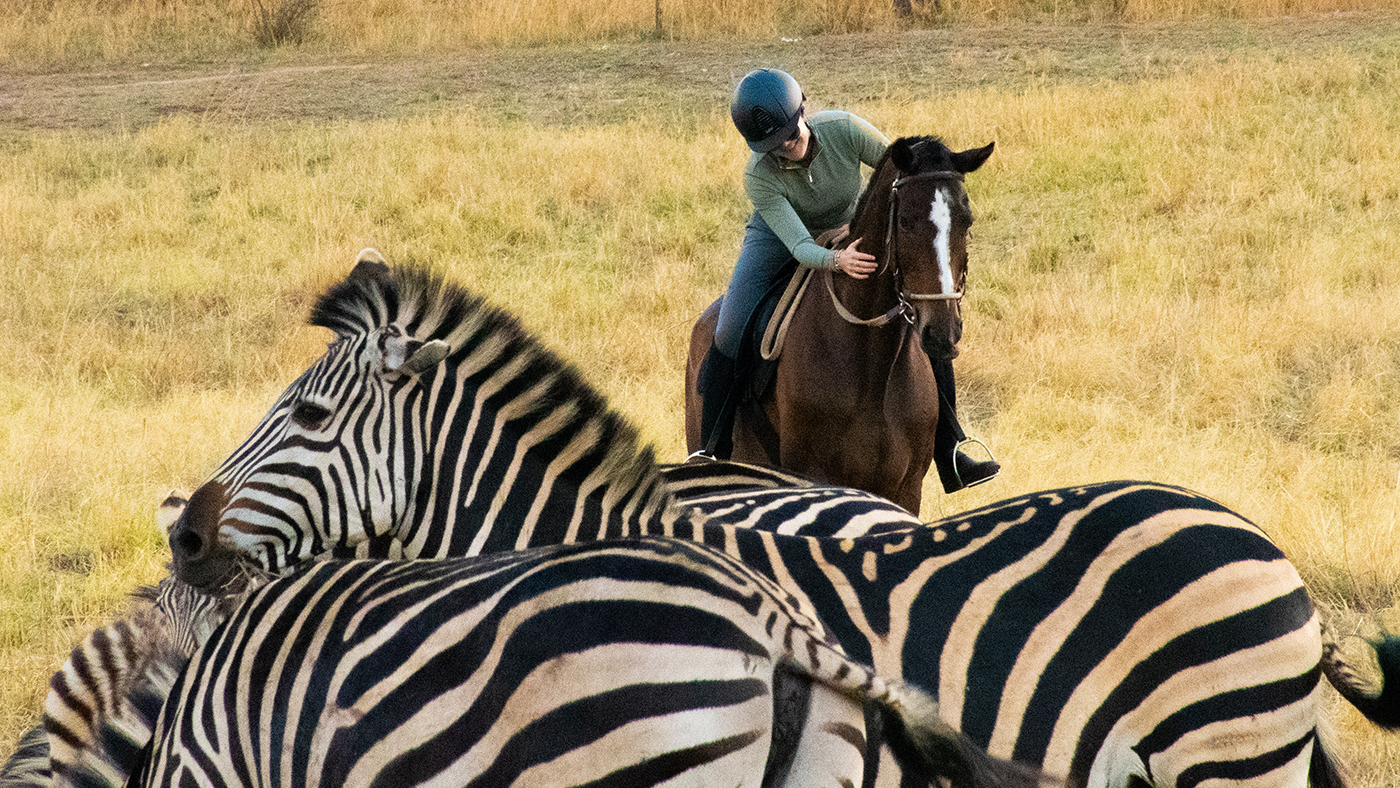
What breed works best for riding in Africa?
When it comes to safari horses, the emphasis is on temperament, stamina and willingness, rather than breed. The herds predominantly feature thoroughbred, Namibian Warmblood, Arab, Friesian, boerperd, and appaloosas, along with unique crossbreeds.
How can you tell if a young horse will make a good safari horse?
When youngsters show a willingness to learn, follow the cues of the herd and bond well with the team, it’s easy to see their potential. Usually, the ones that are brave, inquisitive and a bit mischievous make the best safari horses.
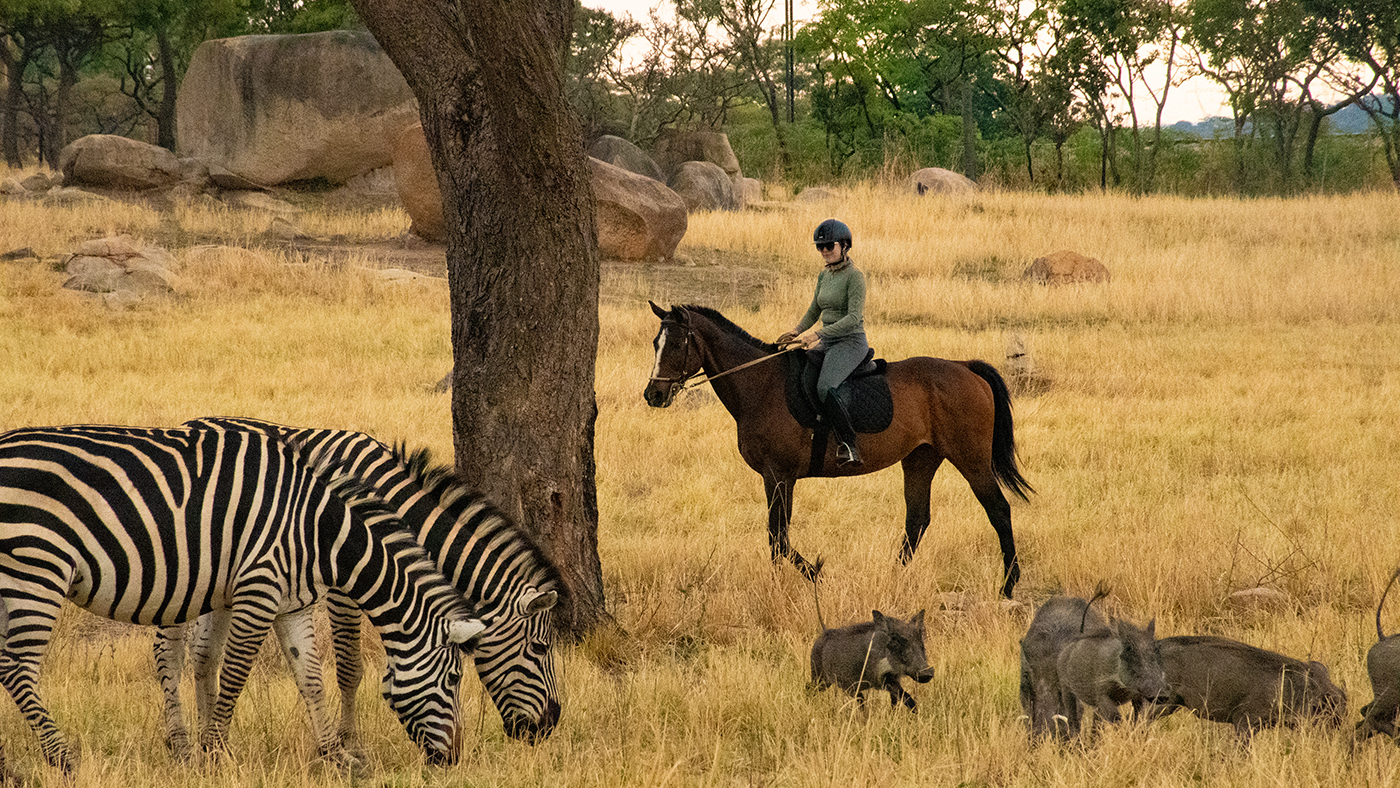
What age do they start their training?
From a young age, foals are brushed and handled by the dedicated stable team. Gentle groundwork and long lining starts at around two-and-a-half years old. Backing and schooling with a dedicated rider begins at around three years old to build confidence and trust.
They go out on their first few safaris in a small group with calm and experienced horses. The horses learn from the rest of the herd, and when they realise the other horses are grazing contently with giraffe and elephants nearby, they follow suit. They are ridden by experienced guides, staff or volunteers for at least a year before graduating to carrying guests.
What sort of training is required to desensitise a horse to all they encounter on safari?
Desensitising safari horses requires less training than you would imagine, and is mostly done by the herd. Living in the wild, you’ll frequently find the horses peacefully grazing alongside zebra, wildebeest, and antelope. They also regularly see elephants and buffalo, who are common visitors to the camps.
Growing up in the bush, the horses develop remarkable sure-footedness. Brushing up against trees, stepping over rocks and having birds fly up underfoot become part of their daily lives. From the beginning, they’re accustomed to hearing loud noises like a helicopter buzzing overhead or a whip being cracked.
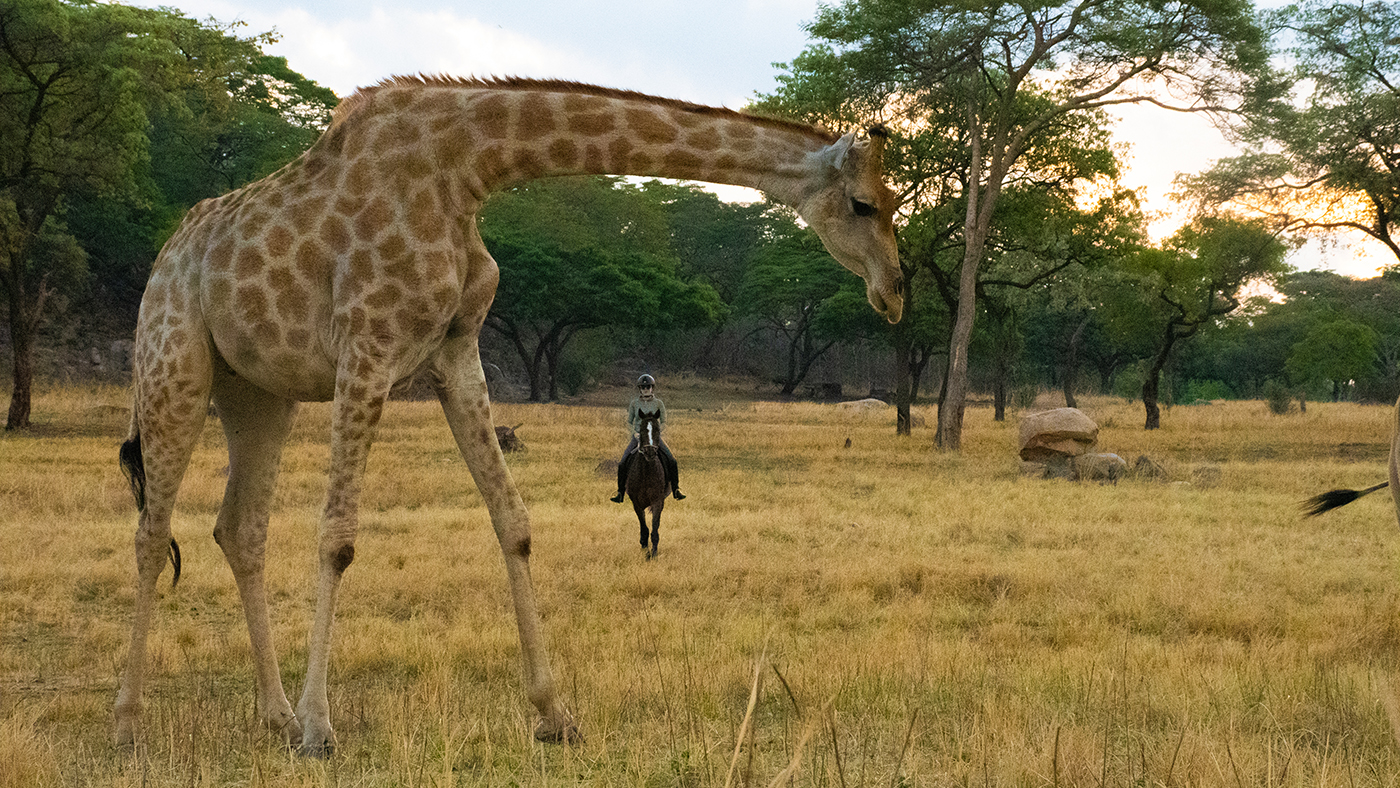
How do you match horses to riders?
Matching guests to horses requires a blend of science, art and a touch of luck. There is a wide range of horses suitable for everyone, from the competitive rider to those preferring a steady hack, and every effort is made to match the horse and rider.
The team meticulously reviews guests’ booking forms considering weight, height, riding experience and preferences. Sometimes it means reading between the lines, but they generally get it right.
A mounting list is drawn up with between two and five horses allocated per rider, with the final match made after they have met the guest. Gentle orientation rides allow guests to acclimatise to the new tack, riding style and terrain. Regular check-ins allow the guides to make adjustments and ensure guests have the best riding experience possible.
What do you do if a horse is nervous out on a ride?
Anxious horses are carefully paired with a relaxed and gentle rider. It’s important to be patient, encouraging them to be brave and rewarding them when they’ve stood their ground. Taking cues from more experienced companions, the horses are allowed to bond, exchange breaths, and graze together. They soon settle down, mirroring the nonchalant grazing of their experienced counterparts.

How do you handle riding in large groups?
Upon arrival, guests receive a thorough safety briefing. Guides cover expectations and safari etiquette, emphasising staying behind the lead guide, following hand signals, and keeping quiet during wildlife encounters. Groups are intentionally small, with a maximum of eight-12 riders, a lead guide and a backup rider.
Is it easy to spot a lead horse from an early age?
Yes and no – sometimes horses surprise you. The guides develop a strong relationship with their horses and it takes time to build up that level of trust. Lead horses need to be courageous, patient, independent and reliable. You might have quirky Thoroughbred who seems to be terrified of the bush become incredibly brave when paired with the right rider. Sometimes, the perfect horse doesn’t quite have the confidence to be out on the trail, but turns into the ideal breeding mare for the next generation of safari horses.
You might also be interested in:

7 unique horse-themed holidays to book for your next trip

7 stunning spots to go on holiday with your horse

Subscribe to Horse & Hound magazine today – and enjoy unlimited website access all year round
Horse & Hound magazine, out every Thursday, is packed with all the latest news and reports, as well as interviews, specials, nostalgia, vet and training advice. Find how you can enjoy the magazine delivered to your door every week, plus options to upgrade your subscription to access our online service that brings you breaking news and reports as well as other benefits.


